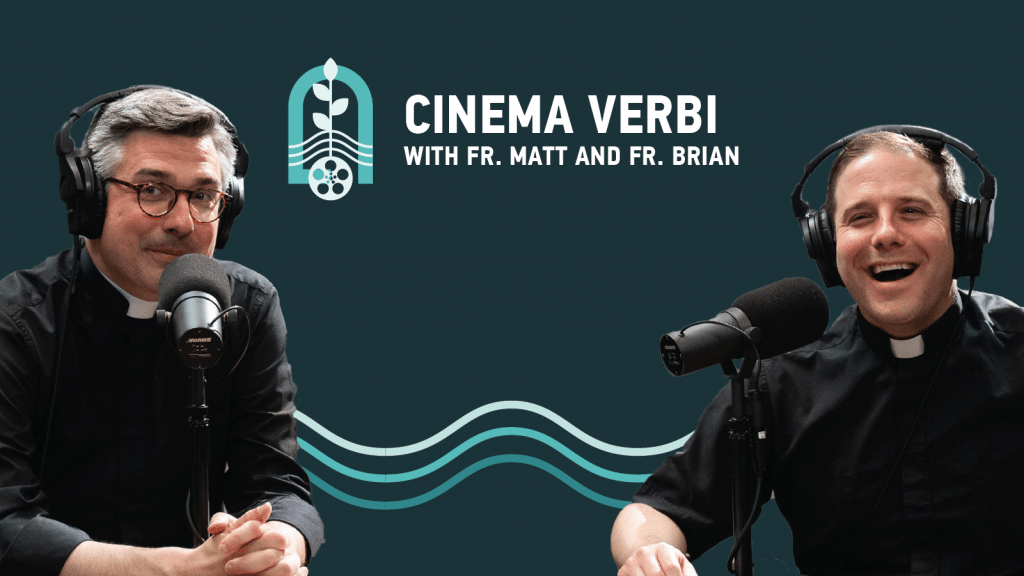Show Notes
Fr. Matt and Fr. Brian discuss Conclave (2024), particularly whether it accurately portrays this unique aspect of the Church’s life—the election of a new pope. They also look at how the film depicts the relationship between faith and doubt. Finally, they discuss the film’s twist ending. Editor’s note: This episode was recorded before Pope Francis’ illness and death and is being released as the world prepares for the real-life conclave to elect his successor.
(0:27) Fr. Brian and Fr. Matt begin by discussion some of the movies they’ve seen recently, including Gladiator II (2024), a sequel to the 2000 film Gladiator, A Real Pain (2024), a film about two cousins who, to honor their late grandmother, travel to Poland for a Jewish heritage tour, and Nosferatu (1922), a silent film (recently remade) that was included on the Vatican’s 1995 list of 45 outstanding films from the first century of filmmaking.
(9:20) Fr. Matt introduces the movie being covered in this episode, Conclave. The film, directed by Edward Berger, written by Peter Staughan, and based on the 2016 novel by Thomas Harris, was released in 2024 and depicts a papal conclave—the gathering of Cardinals in Rome to elect a new pope following the death of the previous pope.
(10:17) Fr. Matt advises listeners that because he and Fr. Brian will be discussing some of the more sensitive topics addressed in the film, listeners should carefully discern whether younger members of their families should listen to this episode.
(12:01) Our hosts provide a brief explanation of how a papal conclave works: When a pope dies (or, as happened in 2013, resigns), all cardinals under the age of 80 gather in Rome to elect the next pope. Those cardinals are sequestered in the Sistine Chapel and must remain isolated from the outside world until one cardinal receives at least two-thirds of the votes cast, thus becoming the next Holy Father.
(12:58) Fr. Brian and Fr. Matt agree that the film is visually accurate in terms of scenery, costumes, and set pieces. At the same time, however, the characters are often driven by a desire for power and to promote their own agenda. While it is true that, as St. Paul says, “we hold this treasure in earthen vessels” (2 Cor 7)—meaning that God’s message is carried by human beings who, through original sin, are broken—that brokenness comes across in nearly all the characters in the film; none of them are virtuous or motivated by a desire to be open to the Holy Spirit in carrying out their sacred duty to elect the next Vicar of Christ.
(17:36) Fr. Brian and Fr. Matt talk about how one of the central themes of the film is (or appears to be) doubt. One of the cardinals preaches that the Church needs a pope who doubts and that the enemy of the Church is certainty. Fr. Matt says that this is “ludicrous.” The whole Church and the faith of those who believe in God are rooted in certainty about the truth of the Gospels. Fr. Matt and Fr. Brian have an extended discussion about how each of the main characters in the film—all cardinals—have the acquisition and projection of power as their primary motive.
(25:54) Our hosts introduce one of the film’s more controversial characters, a cardinal who was made a cardinal in secret, or in pectore. There is real life precedent for popes creating cardinals in secret—often in light of geopolitical concerns—but, unlike the character in the film, these cardinals would be ineligible to participate in a conclave and their appointments expire when the Holy Father dies.
(31:34) Fr. Matt brings up the most sensational aspect of the film. Cardinal Benitz, the cardinal who was created in pectore, wins the papal election. After the new Holy Father chooses the name Pope Innocent, viewers learn that this individual is intersex. Fr. Brian and Fr. Matt discuss the Church’s teaching about intersex persons.
(42:27) Our hosts share their “seeds of the word” ratings for the film, based on how clearly they saw goodness, truth, and beauty reflected in the story. In the last segment of the podcast, Fr. Matt quizzes Fr. Brian on films that feature cardinals as major characters.
